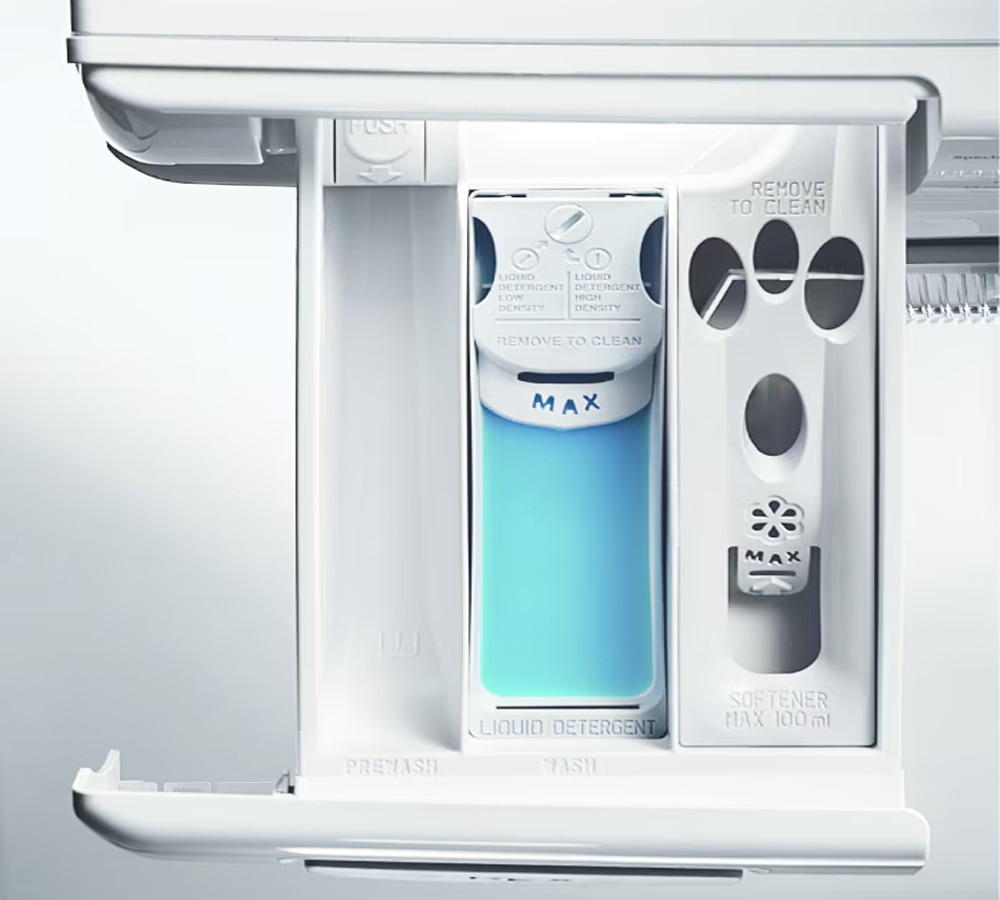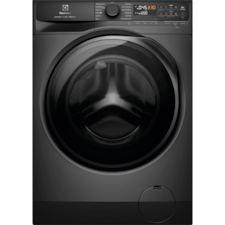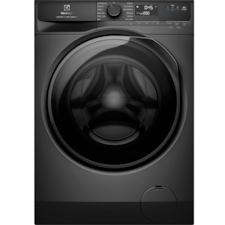Using the correct amount of detergent is crucial to ensuring your clothes are clean and your washing machine operates efficiently. On the other hand, using too little detergent may leave your clothes dirty or cause a build-up of oils and bacteria over time.
Whether you use liquid washing detergent or powder, getting the right amount is key to preserving your clothes and extending the life of your washing machine. In this guide, we’ll explore how to measure detergent properly and avoid the common issues caused by improper detergent usage.
Are you using too much laundry detergent?

Using too much laundry detergent can cause several issues, from ineffective cleaning to long-term damage to your washing machine. Here are some signs that you might be overdoing it, and the consequences that follow:
1. Signs you’re using too much detergent
- Excessive suds in the washing machine: If you notice an unusually high amount of suds during the wash cycle, this could be a clear indicator that you’re using too much detergent.
- Residue on clothes: Clothes that feel sticky, stiff, or have visible residue after washing likely indicate detergent overuse. This residue can attract dirt and make your clothes feel less fresh.
- Foul odours in the washing machine: Over time, excess detergent can build up inside the washing machine drum, leading to mould growth and unpleasant odours.
- Longer rinse cycles: If you find that your washing machine needs extra rinses to remove soap, this could be due to detergent overload.
- Leaking or malfunctioning machine: Too much detergent can cause mechanical problems, like leaks or malfunctions, as the machine has to work harder to remove excess suds.
2. Consequences of using too much detergent
- Clogging and build-up: Excess detergent can accumulate in the washer’s drainage system, leading to blockages and reducing the machine’s efficiency.
- Reduced cleaning performance: Ironically, using too much detergent can actually result in clothes not being cleaned properly, as the excess soap traps dirt in fabrics.
- Wear and tear on fabrics: Residual detergent can weaken fabric fibres over time, causing clothes to wear out faster.
By using the right amount of detergent, you can avoid these problems and keep both your clothes and washing machine in top condition.
What kind of detergent should be used for a washing machine?
Different types of washers, such as front-load, top-load, or high-efficiency, require specific detergents for optimal results. Here’s a guide to help you choose the right detergent for your machine.
| Washing machine type | Recommended detergent | Reason |
|---|---|---|
|
Front-load washers |
High-efficiency (HE) detergents |
Front-load washers use less water and require low-sudsing detergents to prevent residue build-up and ensure proper rinsing. |
|
Top-load washers |
Regular liquid or powder detergents |
Top-load washers use more water and can handle regular detergent, though HE detergents are recommended for newer models for better efficiency. |
Liquid vs powder vs pod detergent
Choosing between liquid, powder, and pod detergents depends on your needs:
- Liquid detergent: Best for pre-treating stains and dissolves easily in both cold and hot water. Great for regular loads and is often used for darker fabrics to avoid residue.
- Powder detergent: Ideal for heavier stains like dirt or mud and works well in warm or hot water. However, it may not dissolve fully in cold water, potentially leaving residue on clothes.
- Pods: Convenient and pre-measured, pods are easy to use but can be more expensive per load. They work well in both top-load and front-load machines but may struggle to dissolve properly in cold water.
How much laundry detergent to use per load?

Using the right amount of laundry detergent is crucial for achieving clean clothes while avoiding build-up in your washing machine. Factors like load size, water hardness, detergent concentration, and soil level all play a role in determining how much detergent you should use.
Here’s a guide to help you measure the correct amount for each load.
1. Based on load size
The size of your laundry load is one of the main factors in deciding how much detergent to use. Here’s a quick reference table for the recommended detergent amount based on load size:
| Load size | Amount of liquid detergent | Amount of powder detergent |
|---|---|---|
|
Small load |
1 tablespoon (or as indicated by detergent brand) |
1/4 cup |
|
Medium load |
2 tablespoons |
1/3 cup |
|
Large load |
3 tablespoons |
1/2 cup |
|
Extra large load |
4 tablespoons |
3/4 cup |
Always refer to the detergent manufacturer’s guidelines to ensure accurate measurements based on their concentration.
2. Water hardness
Water hardness affects how much detergent is needed. Hard water contains more minerals like calcium and magnesium, which can interfere with detergent efficiency. In hard water areas, you may need to add more detergent to get your clothes clean.
On the other hand, soft water requires less detergent since it doesn’t have as many minerals to combat. Check your water hardness and adjust the detergent amount accordingly.
|
How to check your water hardness
1. Use a water hardness test kit: You can purchase a water hardness test kit from most home improvement stores or online. These kits typically include test strips that you dip into water. The strip will change colour based on the mineral content:
2. Contact your water supplier: Many local water suppliers provide reports on water quality, which includes information on water hardness. You can check your supplier’s website or contact them directly to obtain this information.
3. Use a hardness app: There are apps that allow you to input your location and receive details on the hardness of your local water supply. |
3. Detergent concentration
Detergent concentration is another factor to consider. Many modern detergents are concentrated formulas, meaning you need less of them compared to traditional detergents. Look for labels like “2X” or “3X” concentrated to know how much to use.
Always follow the manufacturer’s instructions for concentrated formulas to avoid using too much.
4. Dirt and soil levels
The amount of dirt and grime on your clothes also plays a role in determining detergent use. For lightly soiled clothes, you can use less detergent, while heavily soiled garments, such as work clothes or sportswear, require more detergent to break down oils and grime.
Additional tips for optimal washing
Achieving the best results from your washing machine requires more than just the right amount of detergent. Follow these additional tips to ensure cleaner clothes and a well-maintained machine.
1. Pre-treat stains
For tough stains, it’s essential to pre-treat them before washing. Apply a small amount of detergent or a stain remover directly to the stain, letting it sit for a few minutes before placing the garment in the washing machine. This step helps loosen dirt and grime, making it easier for the detergent to clean thoroughly during the wash cycle.
2. Choose the right wash cycle
Selecting the right wash cycle is key to ensuring detergent effectiveness. Delicate fabrics require gentle cycles, while heavily soiled items may need a more intensive setting. Always refer to the care label of your clothes to choose the best cycle for optimal cleaning and detergent performance.
3. Clean the detergent dispenser regularly
Detergent residue can build up in the dispenser over time, leading to clogs and less effective detergent distribution. Make sure to clean the detergent dispenser regularly by removing and rinsing it under warm water. This simple step helps maintain detergent efficiency and ensures your clothes are properly cleaned.
4. Clean the washing machine
To prevent detergent build-up and maintain washing machine performance, clean your machine regularly. Follow this guide on how to clean your washing machine to keep it in top condition. Regular cleaning reduces detergent residue and helps your washer run efficiently.
5. Use washing machines with smart features
Modern washing machines, like Electrolux models with IntelliDose, automatically distribute the perfect amount of detergent for each load. This smart feature not only saves detergent but also enhances cleaning performance and protects your clothes by ensuring the right amount of detergent is used every time.
Simplify your laundry routine with the right detergent solutions
Using the right amount of detergent is crucial for both effective laundry care and environmental sustainability. By carefully measuring detergent and selecting the appropriate settings, you’ll not only protect your garments but also reduce water and energy consumption.
Electrolux washing machines take the guesswork out of detergent use with features like IntelliDose, which automatically distributes the right amount of detergent for each load. This modern technology ensures your clothes are cleaned efficiently while minimising detergent waste, saving you time and effort.
For an optimal laundry experience, consider an Electrolux washing machine that combines smart technology with high performance to care for your clothes and the environment.
-
- SensorWash helps remove up to 53 stains.*
- IntelliQuick selects best load based programme.
- Refresh clothes with vapour, without washing.
-
- SensorWash helps remove up to 53 stains.*
- IntelliQuick selects best load based programme.
- King-sized duvet* treated and dried in 60 mins.
-
- Added hygiene and gentle care.
- Efficient full-load washing in only 45 mins.
- Sanitise removes 99.99% common bacteria & viruses.*
FAQs about how to use detergent in a washing machine
-
1. How much detergent to use in a 7kg washing machine?
Use about 2 tablespoons of liquid detergent or of powder detergent for a medium load in a 7kg machine.
-
2. Why shouldn't you use a lot of laundry detergent?
Using too much detergent can leave residue on clothes, clog your washing machine, and reduce cleaning efficiency.
-
3. What kind of detergent do you use in a front-loading washer?
For front-load washers, use high-efficiency (HE) detergent to prevent excessive suds and ensure proper rinsing.
-
4. How much liquid laundry detergent should I use per load?
For most loads, use 2 tablespoons of liquid detergent, adjusting slightly for larger or smaller loads.






